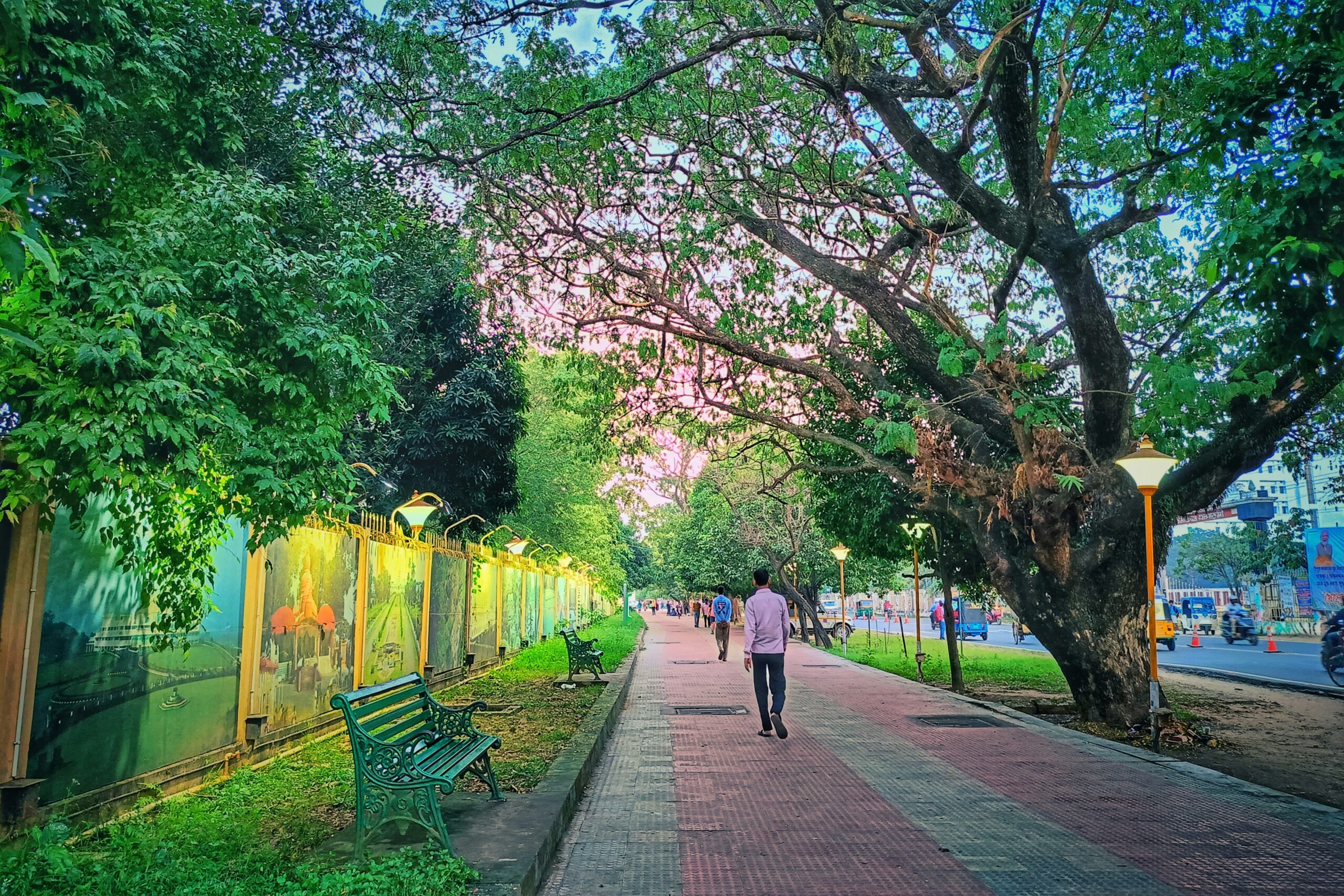Health Disasters on the Rise: 5 Cities With the Worst Air Quality in the USA

Introduction
In recent years, a silent disaster has been sweeping throughout America, one that doesn’t make headlines each day but is slowly eroding the fitness of thousands and thousands. We’re not talking about pandemics or superbugs, even though the ones are severe. This invisible threat floats in the air we breathe: pollution. Poor air quality is not simply an environmental problem, it’s a complete blown public health emergency.
From growing asthma charges to increased dangers of coronary heart sickness and stroke, the consequences of polluted air are each instantaneous and long time period. And even as weather trade plays a position, urban development, visitors congestion, business emissions, or even wildfires are making things dramatically worse, in particular in the U.S. Towns.
Today, we dive deep into the pinnacle 5 American towns with the worst air pollution, uncovering how their toxic skies are impacting residents’ health, what’s inflicting the pollutants, and most significantly what can be achieved.
Table of Contents
The Alarming Link Between Air Quality and Health
Before highlighting the most dirty cities, it is important to understand why air quality means so much to health.According to the World Health Organization (WHO), air pollution causes an estimated 7 million for early deaths worldwide each year. In the United States alone, the American Lung Association reports that more than 40% of Americans are living in unhealthy levels of air pollution.
Breathing in contaminated air is not only unpleasant it is dangerous. Contaminants such as ground level ozone (smog), fine gliding dust (PM2.5), nitrogen dioxide and sulfur dioxide enter the lungs and bloodstream deeply, trigger: trigger:
Asthma attacks and chronic bronchitis
The risk of heart attack and stroke increased,Lung work less in children,
It is more likely that lung cancer develops,premature death in weaker populations (older, baby, existing conditions).A study by 2023 Harvard found that long -lasting risk of PM2.5 increases the risk of early death at the level under the current EPA standard by 13%. This means that many Americans are once injured at the pollution level who are considered “safe”.Let’s look at cities where this health disaster is the most difficult.

1. Los Angeles, California, The Smog Capital No More, But Still Struggling
For decades, Los Angeles has been synonymous with smogs. Although notorious has progressed since the fog in the 1970s, there is a # 1 ranking for ozone pollution in the state Air 2023 report from the American Lung Association.
Why? Geography is partly to blame. LA sits in a pool surrounded by mountains, which implies environmental toxins from vehicles, ports and industry. Add intense sunlight and you will get the right recipe on the ground level ozone-a large respiratory connection.
More than 15 million people in Southern California are exposed to unhealthy air in over 100 days per year. Children in the neighborhood near highways or freight corridors affect high asthma frequencies unevenly.
And now climate change makes things worse. Hotter accelerates the formation of ozone for temperature, while the fires send smoke yolks to the entire region and increase the level of PM 2.5.
Health effects: Studies show that LA residents have reduced lung capacity compared to cleaner cities. Emergency chamber visits for breathing problems Spike during SMOG Alert.Still hope. Electric vehicles, clean energy and strict emissions can make the aggressive sliding from California for rules if maintained.
2. Bakersfield, California, Where Pollution Meets Poverty
Tuck in Central Valley, California, ranks into the top three subsequent most polluted cities for ozone, but also for short term and years long particle pollution.
This city of around 400,000 people is located in an agricultural hub with oil fields, refineries and heavy truck traffic. Dust from agriculture, diesel cars and volatile organic compounds from oil operations are combined to form a toxic cocktail.
Worse, Bakersfield has limited access to high poverty rates and health care, which means that residents suffering from pollution are often untreated.
The American Long Association provided Bakersfield “F” for air quality, citing more than 130 unhealthy air days per year more than any other metro sector.
Health effects: Asthma frequencies are twice the national average here. A UC Davis study is associated with a high risk of childbirth and developmental delay in children to cause long -term risk to Central Valley.Environment Justice Advocate calls it a textbook case on systemic neglect – poor society is the main role of industrial pollution.

3. Fresno Madera Hanford, California, Trapped by Geography and Industry
Another Central Valley Giants, Fresno-Madera-Hanford region, suffers from some of the country’s worst years-long party pollution.
Like Bakersfield, it is boxing at the mountain range that catches emissions. Everything that contributes with agriculture, transport and housing wood. During the winter, temperature attacks work like a lid, smoke holds and smokes near the ground.
Forest fires have become a seasonal nightmare. In 2020 and 2021, through PM2.5 throughout the week. For reference, WHO recommends a maximum of 5 ug/m per year.
Health effect: Fresno County has one of the highest asthma hospitalized prices in California. COPD or heart disease Seniors face life -threatening outbreaks during bad air days.
In the local clinic report, an increase in patients complaining about coughing, chest pain and fatigue are symptoms directly related to air quality.Despite the social effort, progress is slow. Many families cannot filter air purifiers or hepa, leaving them in a weak house.
4. Phoenix, Arizona, Heat, Dust, and Diesel Fumes
Phoenix has exploded in population over the past decades, however its infrastructure hasn’t saved pace. The result? More cars, more creation, and extra pollution all beneath a sizzling sun that fuels ozone creation.
The city frequently reviews dirt storms (haboobs) that blast the area with coarse particles. Combined with car exhaust and business emissions, the air turns into a danger.
While Phoenix isn’t as bad as California for ozone, it ranks alarmingly high for brief-time period particle pollution, largely because of wildfire smoke drifting from California and Nevada.
Health Impact: ER visits for respiratory distress upward push sharply during summer months. A 2022 observation by Arizona State University found that low-income neighborhoods close to interstates had 30% higher asthma prices than wealthier suburbs.
With temperatures regularly exceeding 110°F (43°C), outdoor workers without good enough protection face compounded fitness risks from warmth and pollution.
Phoenix’s rapid growth demands pressing funding in public transit, green areas, and smooth electricity to defend its residents.
5. Pittsburgh, Pennsylvania, The Legacy of Steel Lives On
Once the coronary heart of America’s metallic industry, Pittsburgh has reinvented itself as a tech and healthcare hub however its air still bears the scars of its industrial beyond.
Located in a river valley, the metropolis traps pollutants from ageing factories, coal-fired strength flowers, and freight rail yards. Though steel generators have closed, new sources like fracking operations in nearby areas contribute to accelerated levels of benzene, sulfur dioxide, and fine debris.
Allegheny County, in which Pittsburgh is positioned, has one of the highest cancer risks from air pollution within the kingdom, consistent with the EPA.
Health Impact: Residents document higher than average rates of continual obstructive pulmonary ailment (COPD), cardiovascular disease, and formative years asthma.
A 2021 report by the Group Against Smog and Pollution (GASP) found that Black and low-profits communities in Pittsburgh face up to three times more pollution publicity than affluent white neighborhoods, a stark example of environmental injustice.
Still, grassroots moves and stricter monitoring are pushing for exchange. The metropolis recently followed a Clean Air Action Plan, aiming for carbon neutrality by 2030.
Why These Cities Matter for National Health
These five cities are not surpassed, they are warning signs.They represent widespread trends: urban spread, dependence on fossil fuel, uneven access to climatic disasters and pure air. What is happening in Bakersfield or Pittsburgh today can happen in Atlanta, Houston or Denver tomorrow if we do not work.
The health burden is staggering. EPA estimates that the cost of air pollution is the cost of health care and lost productivity is the cost of the US economy over $ 500 billion annually. Nor do it count unchanged customs on families who soon lost dear.Children, the elderly and people with existing conditions are highly at risk, but no one is really immune.
What can be done? Solution for a healthy future
Good news? We know how to fix it. Here are 7 proven strategies to improve air quality and protect public health:
1. Infection for clean energy
Replace coal and gas plants with sun, wind and geothermal power. California’s intercourse has already significantly reduced emissions.
2. Expand public transport
Low cars mean less pollution. Invest in buses, light lanes and bicycle lanes – especially in subsequent areas.
3. Adopt zero-powerful vehicles
Support EV incentives and create charging infrastructure. California made all new cars zero vigorous by 2035-a model in seconds.
4. Strengthen environmental regulations
EPA should use a close limit for ozone and PM2.5, especially in high risk areas.
5. Make green place
Byskogs and parks absorb environmental toxins and quiet cities. Important in heat exposed areas such as Finix.
6. Monitor the air quality locally
Sensors in the neighborhood help citizens avoid time for extreme pollution and make environmental toxins responsible.
7. Empower Communities
Fund education and health programs in high risk regions. Affected voices lead policy decisions.
Final Thoughts: Clean Air Is a Human Right
Air pollution is not inevitable.It’s a consequence of choices political, economic, and personal.Every time we prioritize highways over sidewalks, or allow factories to operate unchecked, we sacrifice public health.But when we invest in sustainability, equity, and innovation, we gain healthier lives, stronger economies, and a livable planet.
The five cities highlighted here Los Angeles, Bakersfield, Fresno, Phoenix, and Pittsburgh are on the front lines of a growing health crisis.But they can also become models of resilience and reform.Clean air shouldn’t be a luxury.It’s a basic human right.And protecting it starts with awareness, action, and unwavering commitment to health for all.
Takeaway:
If you live in or near these cities, check your local air quality index daily (via apps like AirNow).Use air purifiers indoors, limit outdoor exercise on bad air days, and advocate for cleaner policies.Because when it comes to your health, every breath matters.
Q: Why is poor air quality a major health concern?
A: Poor air quality increases the risk of respiratory diseases (like asthma and COPD), heart attacks, strokes, and even premature death. Long-term exposure can also harm children’s lung development and worsen mental health.
Q: What pollutants are most dangerous in these cities?
A: The biggest threats are ground-level ozone (smog) and fine particulate matter (PM2.5), which come from vehicle emissions, industrial plants, wildfires, and fossil fuel combustion.
Q: Can wearing a mask help protect against bad air quality?
A: Yes, N95 or KN95 masks can filter out harmful PM2.5 particles during severe pollution or wildfire smoke events, especially when outdoor activity is unavoidable.









